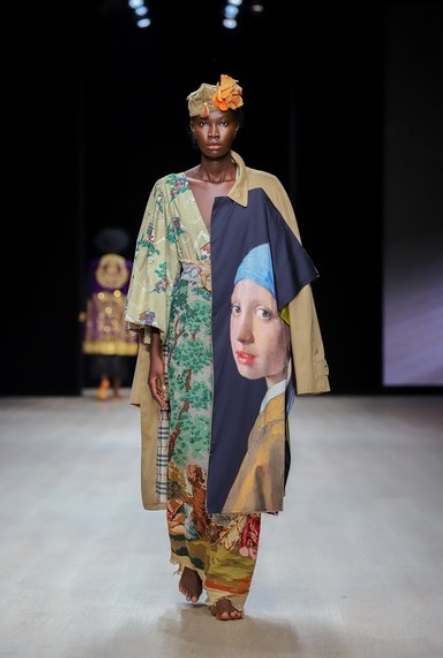OBOR and higher education 4.0
China and re-globalisation: Strategies for Africa
In examining the implications to, and designing the strategy by, the African continent; we must learn from the sources of China’s success: Population and market size (1,3 billion people), economic strength (GDP of US$11 trillion), a large natural resource base, world-class infrastructure, a highly technocratic national leadership, and most importantly, astute and explicit strategic thinking and economic planning. It is also prudent for Africans to understand that at the centre of all the Chinese global endeavours are Chinese national interests.
The best the African hope for is a win-win situation, not a free lunch or ride. There will be no handouts. It is strictly business. The win-win is not guaranteed, the African must work for it. We must negotiate better deals. The Africans must put their thinking caps on, lest they get massively short-changed by our good brothers and sisters from China. We must do the following:
We must not merely respond or react to China’s grand strategy to Africa. We must proactively design our own Africa grand strategy to the world, and in it, our Africa grand strategy to China. This strategy must be independently crafted by Africans, and clearly driven by what we want, and not unduly be influenced by what the Chinese are doing or their vision.
Next steps for the initiative
The success and effectiveness of the Belt and Road Initiative will depend on many factors. These include national and regional geopolitics and the long-term economic benefits of various projects in beneficiary countries.
It will also be important that non-Chinese companies, both public and private, are able to compete successfully for a significant portion of the construction pie.
But tension is inevitable, as has already been seen in South Asia.
China is working to complete a 6 kilometre bridge over the river Padma in Bangladesh for which it is providing over USD$3 billion loan. China is investing some USD$31 billion in other projects in Bangladesh. It also plans to spend some USD$60 billion on construction of ports, railways, roads and power plants in Pakistan.
The world will be watching as the Belt and Road Initiative unfolds – and all the players will hope the benefits outweigh the costs and are sustainable in the long term.
TRIANGULAR TRADE, ROUTES, TAPPING OBOR IN SYLODIUM.
Create your own APPS, global niches, circuits business 4.0, or appendixes inside Sylodium’s system via triangular trade so Sylodium’s places are the cities relations,
Guangzhou – Singapore - SACU Shipping Business, Keifang – Tel Aviv - IGAD trade routes, Shanghai – Israel – Cape Town - West Africa Shipping global, China – Middle West - Kenya Shipping 4.0. Hong Kong – SIngapore - IGAD coordinated routes 4.0.

OBOR and higher education
Currently the OBOR initiative’s main activity in higher education is providing scholarships to students in countries on its route, to study in China. Some 10,000 scholarships were available for students from OBOR countries last year, mostly from developing countries. China has also stepped up language training courses within China in Southeast Asian and other languages where OBOR projects are being promoted. OBOR has also changed the role of Chinese-foreign joint venture universities “not as a mechanism to bring in educational resources [into China] but as a mechanism for going out – pushing Chinese educational programmes to those countries of the Belt and Road,” said Jie Gao, a researcher at the Centre for Higher Education Futures at Denmark’s Aarhus University.
Rexiology of La Hurdimbra (C – A)
X axis (Ontology)
flows from psychology to sociology and vice versa. X2 profiles. sexes, races, prejudices necessary to situate ourselves ... X3 Statistics of the flow, of the groups. X4 new needs. NEW VALUES. X5 new social class- NEW APPS
Y axis (Reality)
formation of groups, individuals, intersubjective interspersed in groups Y2 power of the group over the individual. Y3 Traderian RRSS, source of sciences. Y4 Linseidance. Y5 Fair society? kind of KOSEN RUFU but possible, not utopian or childish, NEW RRSS
Z axis (Potentaility)
Z1 society of complete men. NEW VALUES Z2 social classes? More pieces of classes. Z3 Power relations, positions, instants. Z4 RRSS are a nonsense, FB; Twitter Instagram, vanity is not satisfied with this infantilism. Z5 Plaza, Bar, RRSS, (all). PLACE OF LIVING.
R axis (moments)
R1 genres, business, knowledge, love, work, chat…. R2 species. For everybody, for experts, for low class, for high class… R3, Individuals, Instagram, Twitter, Facebook, LinkedIn….R4 Relations for instants, or for much time R5 The Future is in our hands to know about Sociology and Psicology in a deepest way.
Everybody is in FIR
China Mobile to offer ICT services in Mideast
In line with the Belt and Road Initiative to build trade routes between China and the countries in Central Asia, Europe and Indo-Pacific countries, he said that there are a lot of Chinese enterprises here and there is a need to support them and give them the same level of services they are provided in China.
“We are pleased to have a lot of Chinese companies at the Dubai Internet City. We look forward to seeing the results of increased interactive between Chinese technology companies and Chinese global fronts to accelerate the success between the two countries and ensuring that the UAE becomes one of the most advanced economies in the world,” he said.
Malik added that China Mobile has a lot of innovations and can introduce the technologies to the city, in addition to collaborations with Dubai’s Smart City initiatives and Vision 2021.
China Mobile IoT: China Mobile Partners With Huawei to Create the Era of IoE
China Mobile is the largest Mobile Service Provider in the world, currently serving over 890 million customers. Given the scale of operations it supports, they have adopted an IoT strategy called "Big Connection", whereby China Mobile aims to create an Internet of Everything (IoE), in which thousands of businesses are empowered to create billions of connected devices

Digital Transformation of Warehousing
A key link in supply chains, warehouses must grow rapidly in number and adopt emerging technologies to keep up with consumer demand. Over the past decade, the number of warehouse facilities that make use of WMS has grown from less than 30 percent to almost 70 percent.
These technology systems, however, are usually implemented on their own, or fail to exchange data with other software. The lack of application integration is often cited as the major barrier to effective warehouse management and cost optimization. By contrast, reports suggest that companies with fully integrated supply chains tend to perform 20 percent better than non-integrated businesses.
China - Africa 4.0 - 27/01/2019
China - Africa 4.0 - 11/09/2018

